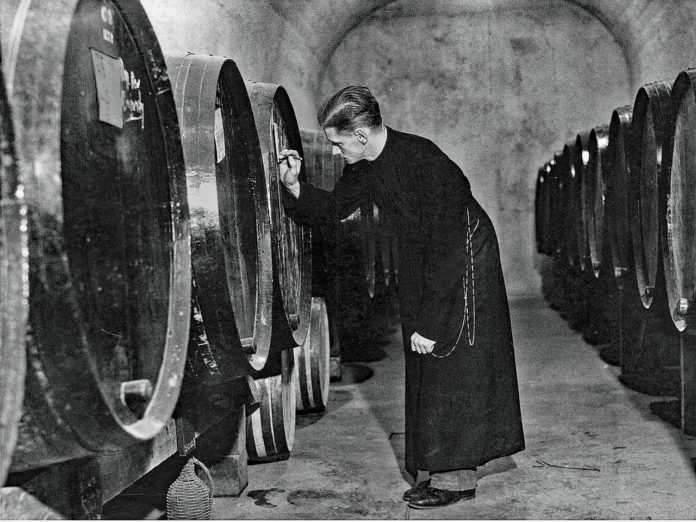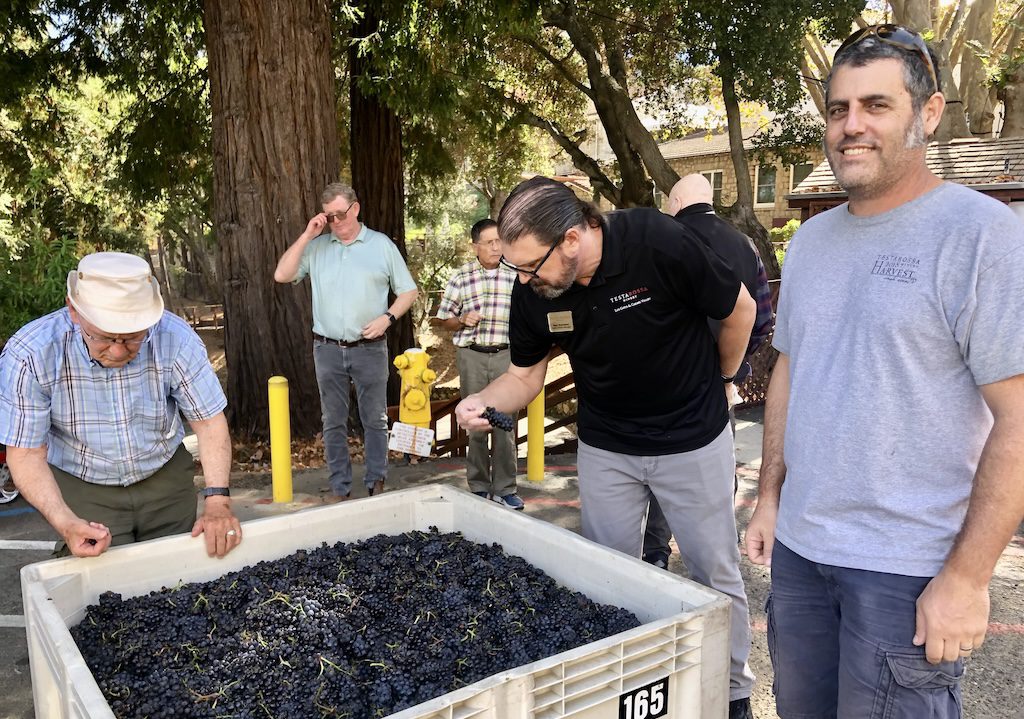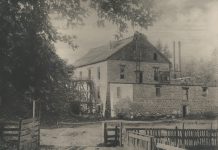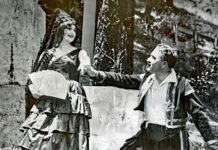
Tourists from around the world flock to the well publicized wine regions of Napa and Sonoma, but those of us who are fortunate enough to live in Los Gatos know that some of the best wines in the world can be found right here in our own backyard.
In fact, Santa Cruz Mountains winemakers successfully established one of the nation’s first American Viticultural Areas in 1981, setting the standard for the rest that followed.
Vineyards have flourished here since the mid 19th century. In 1886, the Los Gatos Cooperative Winery was built on what was then called Winery Road (now Villa Avenue, adjacent to the library) to support small family growers. At its peak, the cooperative produced over half a million gallons of wine per year.

(Los Gatos Library and Museum History Project)
That same year, the Jesuits of Santa Clara College (now Santa Clara University) purchased the orchards and vineyards of early Los Gatos settler Harvey Wilcox, and re-christened the property Saint Joseph’s Hill after the patron saint of San Jose.
Wilcox’s 40-acre ranch was an ideal spot for a winery to fund the construction of a seminary school on the same grounds.
The seminary—known as the Novitiate or “House of the Novices” — was where young men trained for the Jesuit order. Students tended the vines, harvested grapes, and produced wine as a form of devotion during their 13 years of intensive training to become Jesuit priests.

(Los Gatos Library and Museum History Project)
After the first harvest in October, 1888, wine was produced in a temporary building which was replaced five years later by a three-story gravity-flow winery. The sacramental wine bottled by the Jesuits was created for use in Catholic services around the country. The Novitiate winery also became known for its Black Muscat, a dessert wine similar to tawny port.
Demand skyrocketed during prohibition, when anything other than altar wine was illegal, and the winery expanded considerably. By the 1950s, as total wine production peaked at 150,000 gallons per year, the Novitiate became the largest bonded ecclesiastical winery in the United States.
Former California governor Jerry Brown studied here for more than three years in the 1950s. But the student population began to decline in the early 1960s and the college was closed in 1968. The seminary was rechristened the Sacred Heart Jesuit Center and now serves as housing for retired priests and brothers.

Read about the 2024 “Blessing of the Grapes” ceremony that was held recently at the historic Novitiate property.
The Jesuits continued producing wine until 1986. But faced with depleted soil, reduced yields from their aging vines, and declining interest in sweet fortified wines, they decided to close the winery and lease the facilities to commercial vintners.
In 1997, Rob Jensen (coincidentally a graduate of Santa Clara University) and his wife Diana purchased the winery and began producing wine under the Testarossa label (Italian for “redhead,” in reference to Rob’s red hair, not the legendary Ferrari). By agreement with the Jesuit order, Testarossa revived the original Novitiate label in 2005.
Although it has changed hands several times, it remains the fourth oldest continuously operating winery in California.
Testarossa will be joining more than two dozen local wineries at the popular Los Gatos Fall Wine Walk on Saturday, October 26. Tickets can be purchased in advance from the Chamber of Commerce (losgatoschamber.com/wine-walk).
Alan Feinberg is a local historian and founder of the LOST Gatos Project. His mission is to generate enthusiasm among Los Gatos residents for remembering and preserving our town’s unique character and historic treasures before they’re lost forever. For more Los Gatos history, download the free mobile app Discover LOST Gatos and take a self-guided walking tour through our historic downtown.










I was born in Los Gatos 65 years ago and I still remember a beautiful big house that was made entirely out of river rock. The property had a stone wall around it and stairs that led up to a shaded porch. It was set far back from the street and the yard was filled with tall conifers and many rows of finely pruned and lovingly cared for red rose bushes. I loved that big house which was nestled behind its tall dark green trees and its well cared roses. There were other stone houses but this one was on a large parcel behind very old trees and to me as a little girl it seemed secret and quiet. Does anyone have a picture of this old house? I think it was on Santa Cruz Avenue, but I am not certain as I was a very young child.